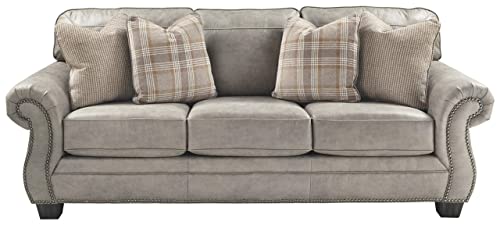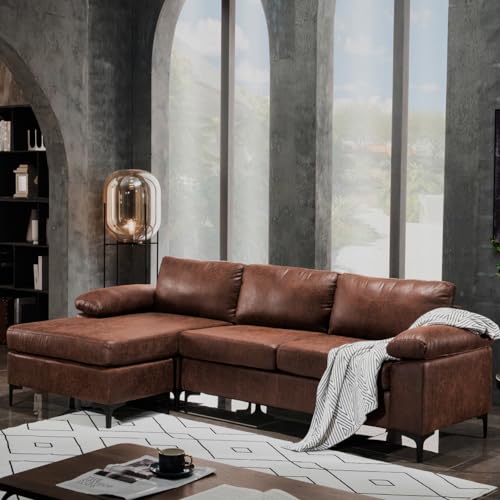What's The Current Job Market For Genuine Leather Sofa Professionals L…
페이지 정보

본문
 How to Spot a Genuine Leather Sofa
How to Spot a Genuine Leather SofaThis sofa makes a fantastic option for any room. The leather upholstery is buttery soft. People love its simple design, and the high-quality genuine leather upholstery.
However, distinguishing genuine leather from faux leather can be difficult to the untrained eye. Here are six suggestions to help you differentiate between the two types: 1. The rough edges.
1. Labels are crucial
Real leather is difficult to duplicate. It has a unique feel and look. It is also durable, easy to clean and doesn't absorb excess body oils. This makes it ideal for those suffering from allergies. However, not all leather sofas are created equal. In fact, some retailers have even been known to pass off PVC as genuine leather.
To ensure that you don't get scammed, it's essential to understand the different types of leather. This includes determining top-grain and full grain leather, and also evaluating the quality of the material used in the upholstery. Do not be afraid to ask your favorite retailers for this information.
The first step to identifying a genuine leather sofa is to check the label. The label should clearly identify the kind of leather used to cover the sofa, as well as any other materials, such as fabric or cotton. The most reliable suppliers should also have clear policies regarding exchange or return in the event that you are not happy with your purchase.
If the sofa doesn't come with any label, you can still work out its authenticity by examining the fabric backing or opening the cushion casing to look for synthetic material. You can also examine the texture of the leather to determine if there are any bumps or blemishes. These are indicators that the leather is fake or has been bonded.
You can also test the integrity of the sofa by rubbing its surface. Genuine leather will have an incredibly soft and smooth texture, whereas bonded or faux leather will be more coarse and feel more like suede. Furthermore, you will discern the difference between wrinkles and bumps of genuine leather as well as the patterns printed on faux leather.
While a genuine leather sofa will cost more than a faux counterpart but it's an investment that will last longer and be a family heirloom over the years. You can minimize the damage caused by sun as well as ozone, heat and humidity by putting your leather sofa in a cool, dark room far from fireplaces, heaters and air cooling units. Leather protection creams can be used to keep your leather sofa sturdy and supple.
2. Look at the back
If the label doesn't inform you what kind of leather sofa is, you need to get up close and intimate with it. The smell, the feel, and the back are all obvious indicators.
Genuine leather won't feel smooth when you contact it. This is because animal hides have different shaped pores that allow them to breathe. A product that feels totally smooth could be fake leather.
Another thing to look for is unevenness or bumps on the surface. The preparation of genuine leather requires buffing, which removes some of the rough outer skin. But if the material used to cover your sofa is top-grain reupholster leather couch it should still be bumpy.
You can also test the quality of leather by putting your finger into it and running it over it. If the leather is real it will stretch and wrinkle just like human skin. This allows the leather to breathe and keeps it from becoming dry or cracking in time.
Faux leather is printed, and thus has a uniform pattern, while genuine leather will have natural imperfections that enhance its beauty and durability. This includes scratches and creases. A good genuine leather sofa will be soft and a bit stiff when it's new, but it should not break or dry out in time if it's regularly cleaned with a special leather protection cream.
To cut costs, some furniture manufacturers make use of a mix of synthetic and real comfy leather couch to make their products. The areas that are 'contact such as seats and armrests as well as backs, are made from real leather sofa leather, while the non-contact portions, such as outside and base arms are upholstered with a less-expensive polyurethane or leather-like synthetic fabric. This is a standard practice however, even if a couch is branded with an authentic leather label, leather sofa you should check it carefully to see what the backing is made of, since this is an instant giveaway that it's not genuine leather.
Labels and pricing can help identify a genuine leather sofa, but it is important to examine it in person. Smell it, touch it and look at its back for a backing made of polyurethane, which is a clear indication that it's not genuine leather.
3. Look at the seat
The seat of a genuine leather sofa is another indication of its quality. While most faux leather couches make use of different materials for the upholstery authentic leather has a distinctive texture that is soft to the touch, but isn't completely uniform in color and shade. Look for bumps under the surface, and a strong natural scent. These characteristics differentiate real leather from fakes and low-grade leather.
If the leather is stitched in a continuous, huge piece, that's another dead giveaway. Although this isn't uncommon with faux leather, if you notice this on genuine top-grain leather it's likely to be a sign that the sofa is not of good quality and should be avoided.
The price and label may provide an idea, but the only sure method to determine is to actually touch the furniture. Genuine leather will not be perfect and not feel uneven. It will also have rough edges and fat wrinkles under the surface. Genuine leather feels supple and different from synthetic materials. The temperature of the furniture can also indicate whether it is made of genuine materials.
A leather sofa is a staple of interior design for a reason: It's elegant, durable and long-lasting. In addition, it's easy to wipe clean and resists liquid spills, making it a smart choice for families with children or pets. The best thing about genuine leather, is that it's a classic style that won't ever go out of fashion and is accessible at a variety of prices.
If you're looking for a classic leather sofa that can stand the test of time, look into the Pottery Barn Turner. Although this two-seater is priced higher but it's made of high-end top-grain leather and has a timeless design that won't date quickly. This is a great choice for those with limited space as it comes in with three sizes and fits in most rooms.
If you're looking for something little more modern, consider this All Modern Geo Genuine Leather Sofa. The mid-century-modern-inspired sofa has a sleek, angular design with a round pillow and a sleek frame. This sofa is made of plywood as well as composite and plastic. The leather is only used in the seating area. It's a step up from Ikea’s faux-leather sofa, which won CHOICE's "Shonky Award" in 2015.
4. Take a look at the smell
Genuine leather has a distinct scent. It's a natural, organic scent that can't be replicated. If the sofa that you're considering buying has a strong, artificial scent, it is not genuine. This is often caused by the chemicals used to treat leather. These chemicals can linger on the furniture even after it's been made.
One way to check the quality of a leather sofa is to gently run your fingers along the surface. Genuine leather will feel rough and include bumps and lumps, just like human skin. If it feels soft and cold, it's most likely fake or bonded leather.
Alternatively, you can take one of the cushions and inspect the backing. False and bonded leather will have some form of polyurethane backing to help support the fabric, whereas genuine leather has a natural back that resembles in appearance to coarse suede. If you notice a woven backing, this is an obvious sign that the couch isn't real leather.
Peter says that the best way to determine whether a sofa is real is to gently rub your fingernails on the surface. The scratches on the leather will dull your fingernails and the surface will stretch and wrinkle a little. It will also feel warm and supple to the touch.
Reversing the sofa to its back and inspecting the upholstery will also tell you if it is genuine. Faux and bonded leather will have a plastic covering on the back of the sofa, while genuine leather will be a single piece of leather that covers the entire back of the couch.
When deciding on the quality of your leather sofa (sovren.Media), consider the amount of use it will receive and how long you want it to last. The more you utilize your couch the more attention it will require. Peter suggests regular and gentle cleaning with a special conditioner for leather to keep the suppleness of the leather and to prevent it from becoming dry and hard.

- 이전글Three Greatest Moments In Bariatric Mobility Aids History 25.02.09
- 다음글10 Great Reasons To Book Your Office Christmas Party Today 25.02.09
댓글목록
등록된 댓글이 없습니다.
